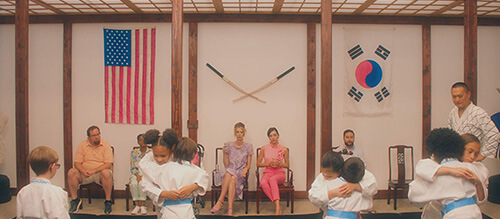“I’m A Weirdo Builder” – Costume Designer Lauren Oppelt In Conversation
“The duty of a costume designer is to tell the audience who a person is from the moment you look at them,” Lauren Oppelt says of the job of a Costume Designer. “You look at this person and you know who they are, where they live, how much money they have, if they like themselves or not, and how their day is going, plus a million other little things.”
Costumes are something that the average audience member might overlook. Of course, things like Superhero suits or period films are obvious points of reference for ‘coolness’ or ‘quality’, but they mean so much more to a film than that.
Hailing from a family of strong, bossy women, Lauren Oppelt is a Costume Designer and self-described “weirdo builder”. After graduating, she worked in theater as a performer but was not finding an outlet for her creativity as a director During this time, she also got work with a Costume Designer. “I met my friend Ann Closs-Farley, and she would hire me to work as her assistant because I could sew. Meeting Ann changed my life. I am a Costume Designer for better or for worse because of her.”
She began taking costuming jobs because they afforded more opportunities than acting for a struggling young artist.
Lauren’s latest film is Greener Grass, directed by Jecelyn DeBoer and Dawn Luebbe. This was Lauren’s fourth job with the directors, and one of her most challenging works to date. Working 15-20 hours a day in the Georgia summer, she and two assistants costumed over 50 principal actors, including a dog and two babies, plus hundreds of background actors over the course of several weeks. She made almost all of the costumes herself, including soccer uniforms and every instance of pom-poms, ric rac, fake flowers and fuzzy letters seen on every costume. All of that effort paid off tremendously.
According to Lauren, the costumes in Greener Grass are inspired by Edward Scissorhands (Colleen Atwood), The Stepford Wives (Ann Roth), and But I’m a Cheerleader (Alix Friedberg), with a little Welcome to the Dollhouse (Melissa Toth) and John Waters’ work in the inspirational mix. The costumes are color-coordinated, with each woman having a color that represents them. Jill is pink, Kim-Ann is green and yellow, and Marriott is orange, and their husbands and children in the woman’s color with a corresponding gender color (blue for boys, pink for girls). The gendered coordination is a nod to Midwest conformity to conservative styles, which is something the film aims to satirize.
As far as how the costuming helps tell the story, the best example is Lisa. Lisa begins in blue outfits, which transform into purple as the story goes on, taking the color pink from Jill. However, it’s more than just a color change. “Lisa evolves in every way from beginning to end,” Lauren says. “At first, she’s wearing sort of dated (but still rad) dresses, while Jill wears mostly two piece outfits. She also doesn’t wear much jewelry. As the film progresses, Lisa starts to wear (mostly homemade) earrings kind of like Jill’s. As she becomes more and more of the alpha, her earrings get bigger, her style gets better, and her silhouette more closely resembles Jill’s.”
When working with Jocelyn and Dawn, Lauren is a collaborator, not just a designer, so the costumes heavily contribute to the film’s comedy; even as much as the writing, production design, music and editing. Buck, one of Lauren’s favorite characters, begins wearing Western wear following a divorce with his wife. As the film progresses, he adds more and more until he is dressed, as Lauren puts it, “like Woody from Toy Story”. A character named Little Helen wears a dress that belongs to the much smaller Jill, and Lauren designed the dress to look torn by Little Helen to fit her. Lauren also had to dress a dog and a soccer ball, and the humor there is self-evident. Those two jobs weren’t without their own difficulties, though.
“I was really stressed about it because the dog actually has a lot of costumes, and the Humane Society asked me a lot of logistical questions about how I was going to do it when I really had no idea.” She eventually figured out that kid’s clothes fit the dog, Icee, and used microtags to hold the outfit together while Icee wore them. Though the soccer ball wasn’t difficult to dress, it was easy to forget when it needed a little shirt, probably because it didn’t report to costuming. “Poor Twilson,” Lauren says. “He’s just a soccer ball baby, and deserved better from me, but ultimately, I think it played.”
So far as her next projects go, Lauren has signed onto a horror film called Student Body. After working on a horror film last year, she has discovered that she loves working in the genre because she enjoys weird things like monsters and creatures, or for a chance to contribute to the story by alluding to the killer through costuming. She will also be working on See You Then, an LGBTQIA+ work by Mari Walker, who is a filmmaker from that community.
With Costume Designers like Lauren in the industry, audiences should give much more credit to the contribution of clothing to the story. It has such a huge impact over the course of a film. “Literally, you are in charge of every single piece of clothing that makes it onto camera. Depending on how much you care, that can be a very daunting task. I aggressively care.” That care comes through in Greener Grass, and is a part of what makes the film so great overall.
[DISPLAY_ULTIMATE_SOCIAL_ICONS]



